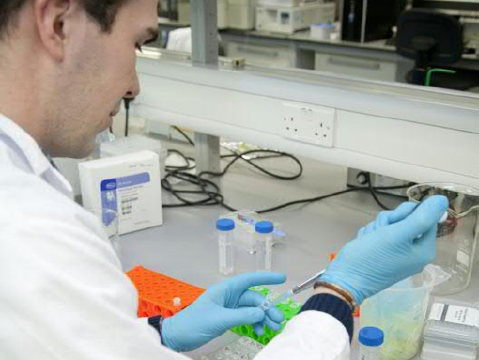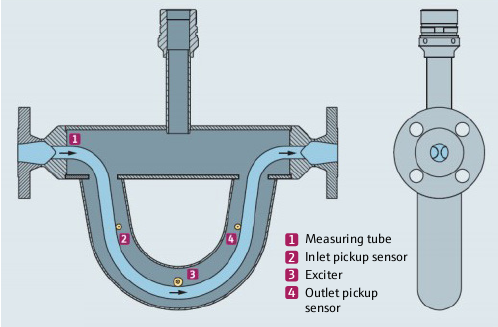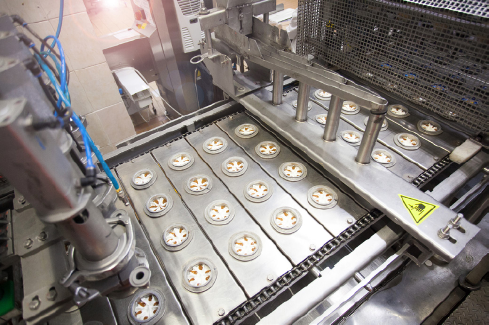Increase productivity and safety of your processes with 80 GHz radar sensors
When it comes to finding the right level technology for the specific needs within your industry, it can be a […]
Depending on the product under scrutiny, food and beverage plant managers may have to meet the requirements of the Food & Drug Administration (FDA), European Union (EU), and perhaps other agencies.
To ensure compliance with the various requirements and regulations that these agencies demand, lab analysis is often mandatory during and after production. Technicians typically take a grab sample to perform these lab tests and then take it to an onsite facility for analysis and communicate the result to plant personnel. Based on these results, operators will make appropriate adjustments or repairs to improve their plant’s process.
This manual procedure is both time consuming and labor intensive, not to mention the possibility for manual errors. However, if the measurement had been done inline, a sudden deviation would be detected. Inline monitoring can also be used to enable automatic closed-loop control, which is not possible with manual measurements. Often overlooked by many in the food and beverage industry is the ability of Coriolis flowmeters to be used for quality control, reducing or eliminating the need for lab analyses.

Checking for product purity and quality is important, but so is meeting the expectations of consumers for proper taste and texture. For example, cold and hot wort measurements in a brewery are important to ensure best quality and yield, as well as the taste.
A single Coriolis flowmeter can measure a number of parameters simultaneously, including density, concentration, viscosity, Brix, Plato, volume, mass flow and temperature — often eliminating the need for multiple instruments.
For example, the flowmeter’s highly accurate density function can be used to measure Brix and Plato values to ensure the quality of ingredients. Viscosity readings provide continuous measurement to minimize the chance of producing off-spec product.
Diagnostics built in a Coriolis flowmeter can also help determine if entrained air is present which directly affects the product quality. This data can be used as an operator alarm and to help during setup.
Learn more about how smart instrumentation can increase operational efficiency in the food and beverage industry

We will now delve into a few examples on how this flowmeter technology can be applied to various applications including measuring concentration, viscosity and density.
Concentration measurements are made by breweries, needed to control the sugar content of their wort to determine the alcoholic strength of the beer. A Coriolis flowmeter provides an accurate density and temperature measurement and also has integrated formulas that use the measured density and temperature to calculate concentration.
You can measure sugar content both manually and automated. Manual measurement is usually both time consuming and an increase in error risk, whereas an inline measurement allows for real time correction of the process, often by automated means via closed-loop control. The end result is reduced waste from bad batches, and reduced time and labor by not having to manually sample the wort.
Fruit processing plants need a history of raw fruit temperature, density, Brix, viscosity, flow rate and total flow volume. Viscosity of the fruit product is measured to determine end product quality. A Coriolis flowmeter can use two simultaneously driven frequencies for measuring mass flow and viscosity.
Viscosity is usually measured in a lab, under lab conditions. The advantage of measuring viscosity directly in the process is that it’s a true reflection of the process conditions and avoids the delay of taking samples to the lab. This allows for live corrections of the process if viscosity is outside the product’s tolerances, often by automated means.

Food products are often foamed with gases to achieve the desired consistency. This occurs, for example, when ice cream is produced. Gas content is a significant factor in the overall quality of the final product and is an important process parameter. The increase in volume of the final product caused by the injected gas is known as overrun. A Coriolis flowmeter can be used to make this measurement, enabling continuous monitoring of the overrun.
Ice cream plants typically inject air, manually measure density and adjust the process accordingly. A Coriolis flowmeter provides inline monitoring, saving sampling time and allowing immediate and automatic adjustment of air injection.
While Coriolis flowmeters are extremely capable for use in inline quality monitoring in food plants, adding additional instruments such as pH meters, colorimeters, dissolved oxygen sensors and other in-line analysis devices can help a food plant’s analyze and control even more of its processes in real time.
To learn more about how you can optimize your food and beverage plant with flowmeter technology read the full white paper:
When it comes to finding the right level technology for the specific needs within your industry, it can be a […]
Technology you can trust in hazardous areas, critical applications and highly regulated industries The process control industries are characterized by […]
Discover the top 10 most viewed blogs of 2022 covering challenges and solutions across all industries May 9, 2023 – […]
Comments